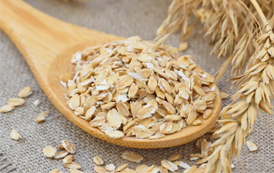Food Grains


Famous Superheros
February 11, 2020

India Cities
February 25, 2020Grains are a principal source of human food, with wheat, rice, barley, oats, millet, rye and corn (maize) being the most widely consumed sources of grains around the world.
Grains are the seeds of grasses. Wheat, millet and rice are the richest source of proteins.
Grains have served as a staple food for much of the world’s population for thousands of years. In particular, the staples of rye, wheat, barley and oats have been temperate climate favourites, whilst rice, corn and millet have been favoured in the tropics and sub-tropics.
Classification of Food Grains:
| Types | Description |
|---|---|
  |
1. All cereal crops are members of the grass family (Poaceae). 2. Cereal grains contain a substantial amount of starch, a carbohydrate that provides dietary energy.
|
  |
1. Starchy grains from broadleaf (dicot) plant families:
|
  |
1. Pulses or grain legumes, members of the pea family, have a higher protein content than most other plant foods, at around 20%, while soybeans have as much as 35%. 2. Common pulses include: Chickpeas, common beans. |
  |
1. Oilseed grains are grown primarily for the extraction of their edible oil. Vegetable oils provide dietary energy and some essential fatty acids. They are also used as fuel and lubricants. 2. E.g. Black mustard, Sunflower seeds, Etc |
Let’s see some of the food grains:
| Food Grains | Description |
|---|---|
  |
1. It was the main grain used for bread-making in Northern Europe and Russia for many centuries. 2. This is partly because it grows well in colder, harsher climates and partly because it was preferred by some people. |
  |
1. In a number of countries, like the Philippines, rice is considered as a food staple. 2. It is one of the easiest to digest and one of the least to cause allergic attacks. |
  |
1. Barley is a type of grain that is abundant in beta glutens. 2. Beta glutens are a form of fibre that is said to be effective in decreasing the risk of developing heart diseases. |
  |
1. These grains are commonly used in baked goods, cereals and loaves. 2. It is an excellent type of food that decreases bad cholesterol in the blood. |
  |
1. Its nutritional profile, nutty flavour, appearance and culinary applications have led it to be commonly referred to as a grain. 2. Buckwheat has played an important role in diets around the world, mainly in Asia and Eastern Europe for around 8,000 years. |
  |
1. Wheat is the most widely cultivated cereal crop in the world. 2. Wheat has come to be a firm favourite grain because of the diversity it provides in culinary applications. |
  |
1. Quinoa originates from the Andes, where it has long been cultivated by the Inca people. 2. It is a small, typically light-coloured round grain, similar in appearance to sesame seeds. |
  |
1. Triticale is a cereal grain created by plant breeders. 2. In the 1950s, plant geneticists hoped that a cross fertilisation of wheat and rye would produce a cereal with superior yield. 3. The hardiness and disease resistance of rye was combined with the milling and baking qualities of wheat. |
India is the second largest producer of food grains globally.
India houses numerous varieties of cereals and pulses that are largely consumed domestically. However, especially rice like basmati have made a mark in the global markets as well.
As per 3rd. Advance Estimates, the estimated production of major crops during 2016-17 is as under:


Interesting Facts:
- Oats and rye were wildflowers that evolved to duplicate wheat and barley to confuse farmers, and only later were farmed on purpose.
- Rice does not need to grow in water, but since rice can survive in water, it is planted in it to control weeds and other pests, creating higher yields.
- Corn is a result of thousands of years of selective breeding by Native Americans. It was bred from a wild grain called teosinte, which is only a few inches long and barely edible.
- The world has more than 50,000 edible plants, yet just three commodity crops of rice, maize, and wheat provide 60% of the plant-derived calories humans eat.





